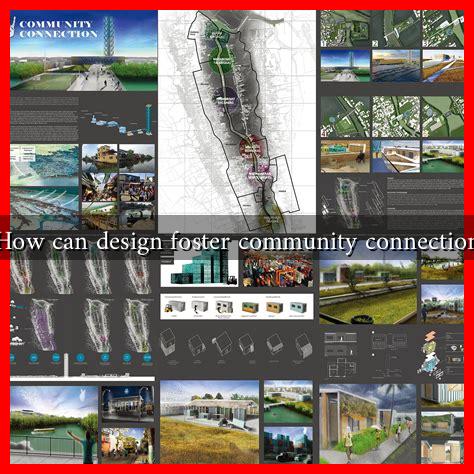-
Table of Contents
How Can Design Foster Community Connection?
In an increasingly digital world, the importance of community connection cannot be overstated. Design plays a pivotal role in fostering these connections, whether through urban planning, architecture, or graphic design. By creating spaces and experiences that encourage interaction, design can help build stronger, more cohesive communities. This article explores how thoughtful design can enhance community connection, supported by examples and case studies.
The Role of Public Spaces
Public spaces are the heart of any community. They serve as gathering places where individuals can come together, share experiences, and build relationships. Effective design of these spaces can significantly enhance community interaction.
- Accessibility: Well-designed public spaces are accessible to everyone, regardless of age or ability. Features like ramps, wide pathways, and seating areas encourage diverse groups to gather.
- Flexibility: Spaces that can accommodate various activities—such as markets, concerts, and festivals—invite community participation and engagement.
- Natural Elements: Incorporating greenery and natural elements into public spaces can create a calming environment that encourages people to linger and interact.
For instance, the High Line in New York City transformed an abandoned elevated railway into a vibrant public park. This innovative design not only revitalized the area but also fostered a sense of community among residents and visitors alike. According to a study by the New York City Department of City Planning, the High Line has become a model for urban renewal, demonstrating how design can enhance community connection.
Community-Centric Architecture
Architecture that prioritizes community needs can significantly impact social interaction. Buildings designed with communal spaces encourage residents to engage with one another.
- Shared Amenities: Incorporating shared facilities such as kitchens, lounges, and gardens in residential buildings can promote socialization among residents.
- Open Layouts: Open floor plans in public buildings, such as libraries and community centers, facilitate interaction and collaboration.
- Local Art and Culture: Integrating local art into architectural design can create a sense of identity and pride within the community.
A notable example is the Kulturhaus in Berlin, which serves as a community center designed to foster social interaction. Its open layout and shared spaces have made it a popular gathering spot for residents, enhancing community ties.
Graphic Design and Community Engagement
Graphic design also plays a crucial role in fostering community connection. Effective visual communication can bring people together and promote local events and initiatives.
- Event Promotion: Well-designed posters and flyers can attract attention and encourage participation in community events.
- Branding: A strong visual identity for a community can foster pride and belonging among residents.
- Information Dissemination: Clear and engaging signage can help residents navigate their neighborhoods and discover local resources.
For example, the 100 Resilient Cities initiative uses graphic design to communicate resilience strategies to communities. By creating visually appealing materials, they engage residents in discussions about local challenges and solutions, fostering a sense of collective responsibility.
Case Studies: Successful Community Design
Several cities around the world have successfully implemented design strategies to enhance community connection. Here are a few notable examples:
- Copenhagen, Denmark: The city’s extensive bike lanes and pedestrian-friendly streets encourage social interaction and reduce reliance on cars, fostering a sense of community.
- Melbourne, Australia: The city’s laneways are designed to promote street art and local businesses, creating vibrant spaces for community engagement.
- Barcelona, Spain: The Superblocks initiative reclaims street space for pedestrians and cyclists, enhancing community interaction and reducing traffic congestion.
Conclusion
Design is a powerful tool for fostering community connection. By creating accessible public spaces, community-centric architecture, and engaging graphic design, we can enhance social interaction and build stronger communities. As cities continue to evolve, prioritizing thoughtful design will be essential in nurturing the connections that bind us together. The examples and case studies highlighted in this article demonstrate that when design is approached with community in mind, the results can be transformative, leading to more vibrant, connected, and resilient neighborhoods.

